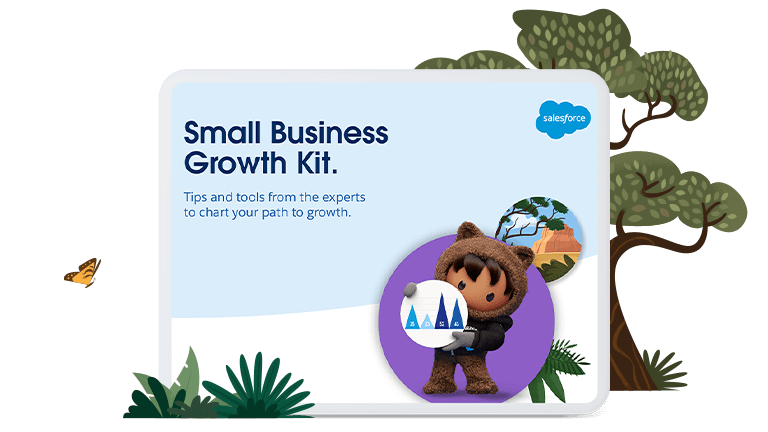Data is more important than ever for small businesses. In fact, it can be hard to avoid all the recent talk about data-centricity and customer-centricity, which have become so intertwined that they’re virtually indistinguishable. But data can help businesses do more than just connect with the customer. From creating new products and minimising financial risk to optimising processes and improving forecasts, data is presenting exciting new opportunities – and big savings – for today’s organisations.
But big data comes with a caveat: businesses need to find a signal in the noise. But with so much free-floating data from so many disparate sources, how can organisations know what’s mission-critical and what’s fool’s gold?
Connected Small Business: Your Guide to Faster, Smarter Business Processes
Read our new e-book to learn how your SME can overcome even the toughest challenges by streamlining and connecting business processes.

Types of business analytics tools
Business analytics tools can help organisations leverage one of their most valuable resources: data. Even better, they can do so in an affordable and user-friendly way, so that there’s no need for teams of data scientists or costly analysts. With so many benefits, it’s easy to see why nearly 70% of small businesses are investing in business analytics tools.
The three types of business analytics tools are:
- Descriptive analytics. Descriptive analytics tools dig through existing data to paint a picture of what’s already happened, helping businesses identify key trends and patterns. Descriptive analytics form the baseline for most standard business reporting.
- Predictive analytics. Predictive analytics tools not only look at historic data and trends, but they also use machine learning and statistical modelling to predict what might happen next. Predictive analytics can help SMEs optimise customer journeys, identify market opportunities for new products and services, and improve upselling and cross-selling.
- Prescriptive analytics. Prescriptive analytics take predictive analytics one step further by not only predicting future outcomes but also suggesting the best path forward. Prescriptive analytics are at the heart of data-driven decision-making, emphasising not just past results, but future gains.
The advantages of business analytics tools
Business analytics tools enable organisations to operate in a more informed manner, making decisions based on intelligence rather than hunches and guesswork. Business analytics tools can empower small businesses to:
- Streamline processes and improve operational efficiencies.
- Tailor customer journeys to meet new expectations for engagement.
- Improve forecasting to build a better blueprint for future business success.
- Identify market needs and develop new products and services.
- Cut costs by identifying and eliminating redundant tools and workflows.
What to do before deploying business analytics tools
Organisations that are looking to leverage their data to fuel business intelligence will have some important things to consider. These are challenges, not roadblocks, but in order to get the most out of your business analytics tools, you’ll want to:
- Round up rogue data. Unstructured data is estimated to comprise up to 90% of all data. This free-floating data not only is being wasted; it can also be a security concern. In order to unlock the true power of business analytics, make sure you’ve centralised your data management.
- Skill up the workforce. The benefits of a data-literate workforce are tremendous, offering everything from increased revenue and employee satisfaction to improved agility. The best part about skilling up the workforce to become more data-centric? It’s affordable and can be done from anywhere, at any time with learning platforms like Trailhead. Bridging the digital skills gap will not only provide benefits to the business, it will help create a happier workforce and increase employee retention.
- Pinpoint where business analytics tools will be most effective. Eventually, you’ll probably want to use the power of data to unlock benefits across the value chain. But when first introducing data analytics tools, look for use cases where the tools will be most impactful, whether that’s navigating the supply chain or turbocharging marketing and sales processes. Once you have a pain point in mind, you can choose the right tool to address it. Decide what types of data you’ll source, what data sources you’ll use and how you’ll measure your progress.
- Remove barriers to access. One of the most important aspects of business analytics tools is accessibility. The democratisation of data can be empowering, but a data literacy study showed that only 25% of surveyed employees felt they were prepared to use data accurately. Before bringing in data analytics tools, make sure that there’s a framework for how your teams can use data in an organised, easy-to-grasp way so that it can solve problems in their functions rather than create new ones.
What to look for when choosing business analytics tools
Every business has unique needs that they’ll want to address when choosing their data analytics tools, but there are some important factors to look for.
Artificial intelligence. Artificial intelligence is promising to reinvent everything from healthcare to housing in the near future, but it offers plenty of business benefits right now. Small businesses can use AI to automate routine tasks, increase productivity, deploy chatbots and get the most out of their resources.
Out-of-the-box insights. One of the most effective ways to help the workforce become more data-centric is to present them with easily digestible insights delivered to ready-to-go dashboards. Our sales and service analytics apps enable teams to quickly identify new opportunities, act on trends, track performance and share real-time insights across devices.
Natural Language Processing. Natural language processing is growing by leaps and bounds. Every time you connect with Siri or Alexa, mountains of data are produced, helping to perfect machine analysis and bridge the gap between humans and computers. But this data can do more than improve interfaces; it can increase data-centricity. Soon, no longer will the workforce have to navigate spreadsheets, learn how new software works or even touch their keyboard: they can simply ask “What are the revenue projections for the third quarter?”
Easy to scale, easy to integrate. If your organisation already has business intelligence software, you’ll want to look for analytics tools that can be easily integrated with your current system. You’ll also want to look for business analytics tools that can scale with your company so that you can modify your tools as your business needs change.
Chart your path towards a more efficient future.
To read more about how you can use your data to help your business reach its peak potential, download a copy of our free eBook, The Connected Small Business.
The Small Business Growth Kit – your key to a booming business
Grab a free copy of our new toolkit to see top tips for improving productivity, increasing revenue and driving business growth.

























